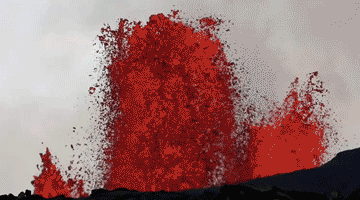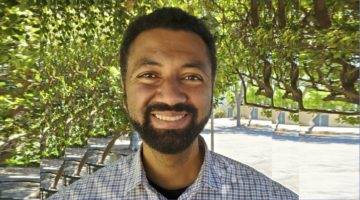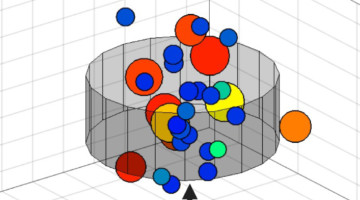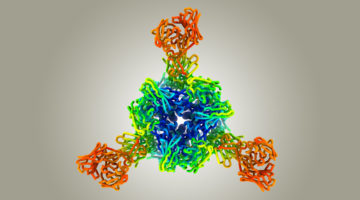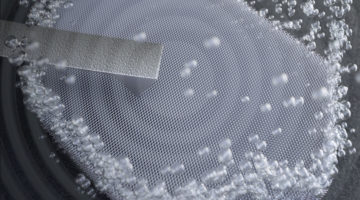Compared to the violent explosions of Mount Vesuvius or Mount St. Helens, Hawaiian volcanic eruptions are relatively calm, characterized by flowing rivers and fountains of lava. Here, researchers have discovered that even low-viscosity magma sometimes behaves more like brittle glass that shatters into fine particles. Read more »
Main Attraction: Scientists Create World’s Thinnest Magnet
A one-atom-thin 2D magnet that operates at room temperature could lead to new applications in computing and electronics—such as high-density, compact spintronic memory devices—and new tools for the study of quantum physics. X-ray experiments at the ALS characterized the material’s magnetic parameters under high temperature. Read more »
Alpha N’Diaye, Research Scientist
Alpha N’Diaye first came to Berkeley Lab as a postdoc, but his interest in Berkeley was piqued far earlier. Find out what inspired teenage Alpha, and what keeps him here to this day. Read more »
Mineral Microstructures Shed Light on Planet-Scale Dynamics
To explore what happens to minerals under the extreme conditions in Earth’s mantle, researchers developed an x-ray technique that bridges the gap between methods that reveal bulk properties and those that focus on individual crystals. Use of the technique has shed light on the dynamics of tectonic-plate subduction in Earth’s lower mantle. Read more »
Congratulations and Thank You to Our 2021 Retirees!
Thank you to Sue Bailey, Pat Casey, Susan James, Dave Richardson, Jackie Scoggins, Doug Taube, and Scott Taylor for your innumerable contributions and many years of service! Read more »
Researchers Set Sights on Another COVID-19 Target
Early in the COVID-19 pandemic, it was quickly established that the receptor binding domain (RBD) of the SARS-CoV-2 spike protein is a prime target for neutralizing antibodies. Now, scientists have found a second region of the spike protein that is targeted by dozens of antibodies, some of which exhibit ultrapotent neutralizing activity. Read more »
Key to Cleaner Combustion? Look to the Stars
Researchers made the first real-time, lab-based measurement of free radicals reacting under cosmic conditions, prompting elementary carbon and hydrogen atoms to coalesce into primal benzene rings. The findings are key to understanding how the universe evolved with the growth of carbon compounds and could also help the car industry make cleaner combustion engines. Read more »
Angelic Lucero, Accelerator Operator Specialist
Working at the ALS started out as a summer job in college for Angelic Lucero—and then she never left. She gives us a glimpse into all the details our operators need to monitor and talks about efforts to help new people at the Lab access resources. Read more »
EPSCoR Collaboration Fosters New Research and New Careers
The DOE Established Program to Stimulate Competitive Research (DOE EPSCoR) encourages partnerships between national labs and researchers in qualifying states and territories. An EPSCoR collaboration with researchers from Kentucky has resulted in an ALS highlight, career advancement for young scientists, and a larger, center-scale proposal. Read more »
New Tools Link Catalytic Activity to Nanoscale Transformations
Transitioning to a clean hydrogen economy will require cheaper, more efficient ways to split water molecules. To address bottlenecks in the water-splitting process, researchers developed a suite of advanced tools, including a liquid flow cell that enables electrochemical studies of catalysts under working conditions. Read more »
- « Previous Page
- 1
- …
- 16
- 17
- 18
- 19
- 20
- …
- 28
- Next Page »
